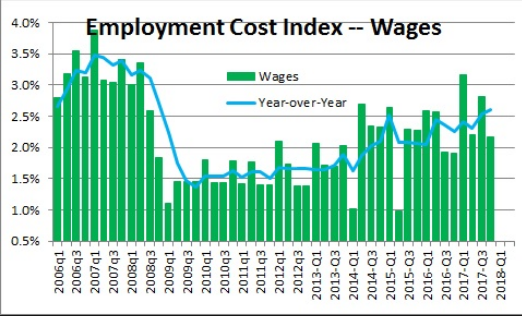Dude, where’s my pay raise?
The economic recovery is coming up on its ninth birthday. Unemployment has fallen steadily and relatively consistently during both the Obama years and now President Trump’s tenure, down to 3.9 percent in April. That’s the lowest level since 2000.
Meanwhile, lots of other measures suggest firms are having trouble finding workers. There are 1.1 unemployed persons per job opening, tied with the lowest ratio on record, per the Bureau of Labor Statistics. Half of firms say they can’t find qualified workers, according to the National Federation of Independent Business’s latest survey of small- and medium-sized businesses.
In theory, all this means employers should have to offer much higher wages to attract and retain talent. Somehow, though, reality isn’t cooperating with the theory.
Raises have been disappointing: Before inflation, hourly pay was up just 2.6 percent in April compared with a year earlier. Some other measures of wage growth, such as the quarterly Employment Cost Index, are stronger but still not great.
Wages are a “lagging” indicator, meaning raises generally materialize late in the business cycle. So maybe we’re all a hop, skip and a jump away from a generous pay hike. Particularly because inflation seems to be finally picking up. Maybe workers will see prices rising and put more pressure on employers to top off their paychecks.
But truly, the lack of significant raises this far into one of the longest expansions on record remains a puzzle. Let’s go through some possible explanations.




